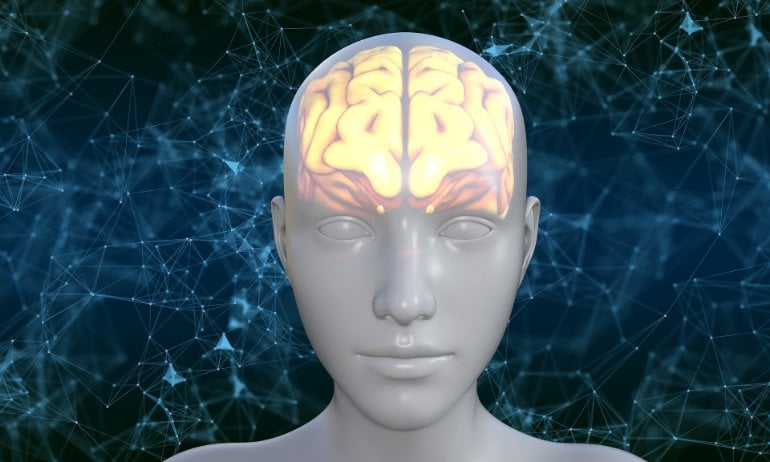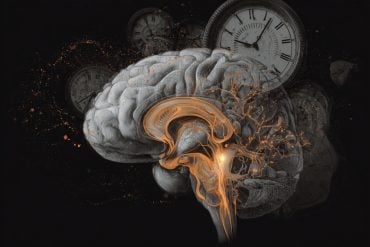Summary: A newly discovered microbiome-controlled anti-inflammatory subset of astrocytes helps researchers better understand inflammation of the central nervous system and its regulation.
Source: Brigham and Women’s Hospital
Astrocytes are the most abundant type of cells within the central nervous system (CNS), but they remain poorly characterized. Researchers have long assumed that astrocytes’ primary function is to provide nutrients and support for the brain’s more closely scrutinized nerve cells; over the years, however, increasing evidence has shown that astrocytes can also actively promote neurodegeneration, inflammation, and neurological diseases.
Now, a team led by researchers from Brigham and Women’s Hospital, has shown that a specific astrocyte sub-population can do the opposite, instead serving a protective, anti-inflammatory function within the brain based on signals regulated by the bacteria that reside in the gut. Findings on the new anti-inflammation pathway are published in Nature.
“Over the years, many labs, including mine, have identified important roles for astrocytes in promoting neurological diseases,” said corresponding author Francisco Quintana, PhD, of the Ann Romney Center for Neurologic Diseases at the Brigham. “This is the first case in which we’re showing that at least a subset of these cells (astrocytes) can prevent inflammation. The reason we haven’t seen this before was because we were studying these cells as if they were uniform, or one single cell type. But now we have the resolution to see the differences between these cells.”
The researchers used refined gene- and protein-analysis tools to identify the novel astrocyte subset. The astrocyte population resides close to the meninges (the membrane enclosing the brain) and expresses a protein called LAMP1, along with a protein called TRAIL, which can induce the death of other cells. These features help the LAMP1+TRAIL+ astrocytes limit CNS inflammation by inducing cell death in T-cells that promote inflammation.
To determine what mechanism controls LAMP1+TRAIL+ astrocytes in the brain, the researchers performed a series of tests using the gene-editing tool CRISPR-Cas9. They found that a particular signaling molecule, called interferon-gamma, regulates TRAIL expression. Moreover, they found that the gut microbiome induces the expression of interferon-gamma in cells that circulate through the body and ultimately reach the meninges, where they can promote astrocyte anti-inflammatory activities.
Understanding the mechanisms driving the anti-inflammatory functions of LAMP1+TRAIL+ astrocytes could enable researchers to develop therapeutic approaches to combat neurological diseases, like multiple sclerosis. For example, they are exploring probiotic candidates that can be used to regulate the astrocytes’ anti-inflammatory activity.

Additionally, the research team’s more recent data indicates that certain brain tumors exploit this pathway to evade the body’s immune response. The investigators are therefore developing cancer immunotherapies to retaliate against the tumors’ attacks.
“Finding microbiome-controlled anti-inflammatory subsets of astrocytes is an important advance in our understanding of CNS inflammation and its regulation,” Quintana said. “This is a very novel mechanism by which the gut controls inflammation in the brain. It guides new therapies for neurological diseases, and we believe that this mechanism could contribute to the pathogenesis of brain tumors.”
Quintana’s lab identified the only other subset of astrocyte known to be regulated by the gut microbiome in 2016, but the investigators believe that there are likely others. “It’s becoming clear that the gut flora are important in many diseases,” he said. “We’re lucky that we’ve been leading the charge to identify different subsets of astrocytes and the mechanisms that control them. We have a list of other populations of astrocytes, and we’re working to see how the gut flora may control them.”
Funding: This work was supported the National Institutes of Health (NS102807, ES02530, ES029136, AI126880, AI149699, DP2AT009499, 1K99NS114111, F32NS101790, and R01AI130019), National MS Society (RG4111A1 and JF2161-A-5), the International Progressive MS Alliance (PA-1604-08459), a Chan-Zuckerberg Initiative Ben Barres Early Career award, the Burroughs Wellcome fund, the Canada Institute of Health Research, Canadian Foundation for Innovation, Dana-Farber Cancer Institute (T32CA207201), Program in Interdisciplinary Neuroscience at BWH, and the Women’s Brain Initiative at BWH, an Alfonso Martín Escudero Foundation postdoctoral fellowship, the European Molecular Biology Organization (ALTF 610-2017), the FAPESP BEPE (#2019/13731-0).
About this neuroscience research news
Source: Brigham and Women’s Hospital
Contact: Haley Bridger – Brigham and Women’s Hospital
Image: The image is in the public domain
Original Research: Closed access.
“Gut-licensed IFNγ+ NK cells drive LAMP1+TRAIL+anti-inflammatory astrocytes” by Sanmarco, LM, et al. Nature
Abstract
Gut-licensed IFNγ+ NK cells drive LAMP1+TRAIL+anti-inflammatory astrocytes
Astrocytes are glial cells that are abundant in the central nervous system (CNS) and that have important homeostatic and disease-promoting functions1. However, little is known about the homeostatic anti-inflammatory activities of astrocytes and their regulation. Here, using high-throughput flow cytometry screening, single-cell RNA sequencing and CRISPR–Cas9-based cell-specific in vivo genetic perturbations in mice, we identify a subset of astrocytes that expresses the lysosomal protein LAMP12 and the death receptor ligand TRAIL3. LAMP1+TRAIL+ astrocytes limit inflammation in the CNS by inducing T cell apoptosis through TRAIL–DR5 signalling. In homeostatic conditions, the expression of TRAIL in astrocytes is driven by interferon-γ (IFNγ) produced by meningeal natural killer (NK) cells, in which IFNγ expression is modulated by the gut microbiome. TRAIL expression in astrocytes is repressed by molecules produced by T cells and microglia in the context of inflammation. Altogether, we show that LAMP1+TRAIL+ astrocytes limit CNS inflammation by inducing T cell apoptosis, and that this astrocyte subset is maintained by meningeal IFNγ+ NK cells that are licensed by the microbiome.






